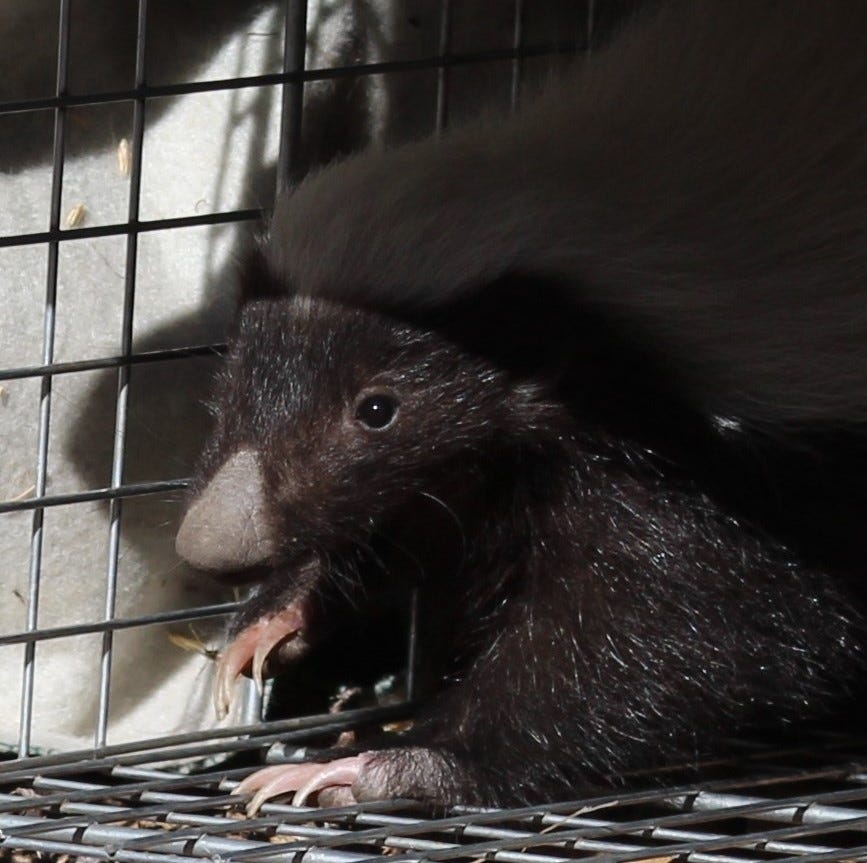
Day 191 of the Quarantine (September 21, 2020)
Swainson’s thrushes dart about the yard. Maybe not a mutation of thrushes but certainly a hermitage of thrushes. Two in particular chase each other, one offering a liquid call that sounds like dripping water. If I didn’t know better, I’d say this is courtship. It would be a first for the Mules, where my reports of Swainson’s—going back to 2011—are the only records on eBird. A first courtship in southern Arizona, even. The bird normally breeds in Canada and the Pacific Northwest with a southwestern limit in the White Mountains, according to the wonderful tome Arizona Breeding Bird Atlas.
William John Swainson, a nineteenth-century British ornithologist, entomologist, malacologist, conchologist, and artist (did he have a life?), rates quite a few birds. Among them, this thrush, a hawk, a warbler, a sparrow, a flycatcher, and a toucan. I’m afraid to look up the bugs and snails and mollusk shells named after him. Maybe he deserves immortality, but I lean more toward dropping these less descriptive titles from the bird lexicon. Swainson’s thrush? Even if Swainson was a member of the Royal Society and the first illustrator and naturalist to use lithography, there are so many other wonderful name alternatives. Like mosquito thrush, for its habit of nabbing insects from the shrubbery. Or russet-backed thrush. Or, my favorite (because it’s mine), furtive thrush.
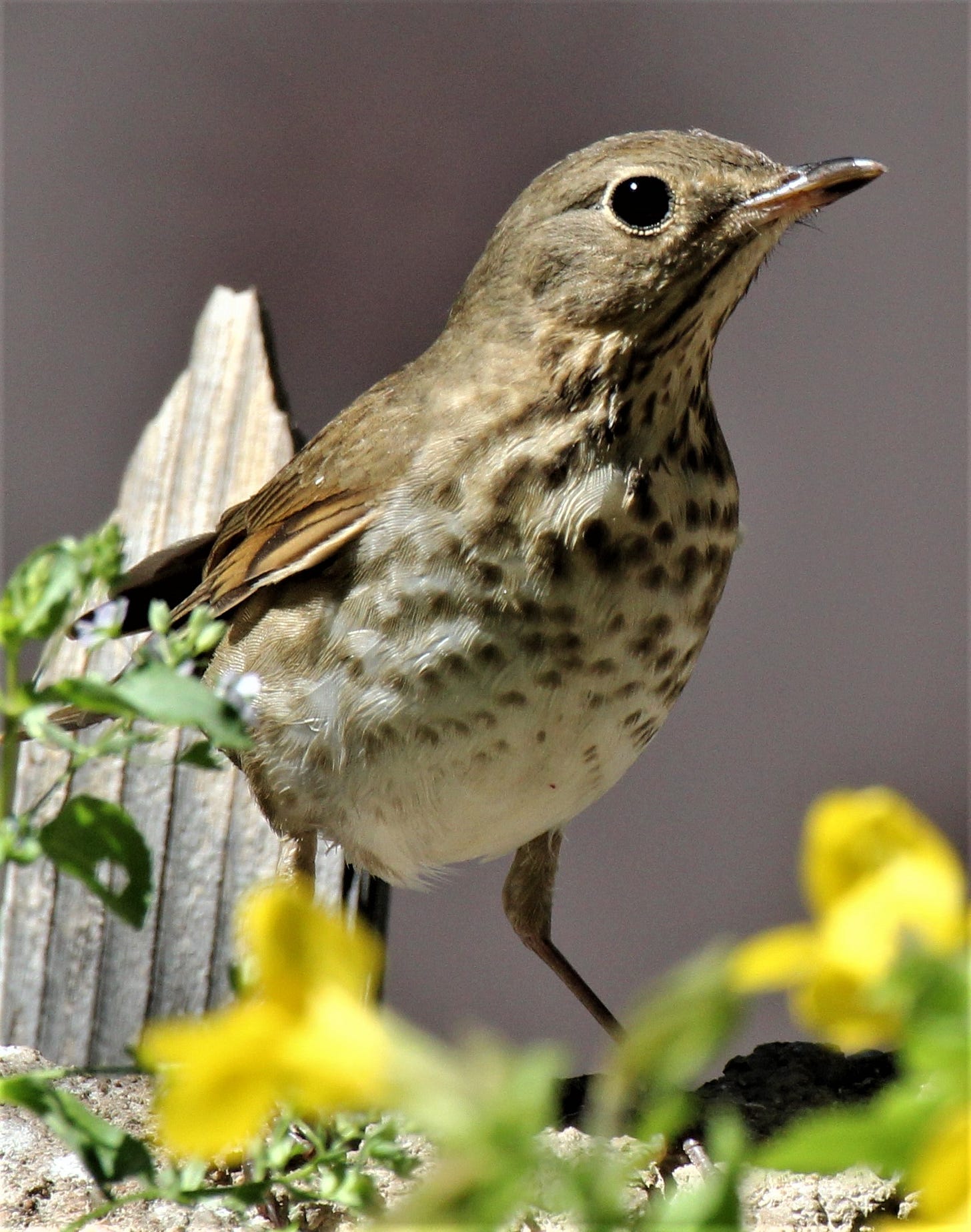

Wilson’s warbler? The little yellow guy with a neat black beanie is named for Alexander Wilson (1766–1813), a Scottish immigrant regarded as the father of American ornithology. Wilson himself favored descriptive names, calling this one a “green black-capt flycatcher.” How about “skull-capped lemon warbler” whose song goes “tickle-tickle-tickle-me”?
For the past nine nights I’ve trapped seven skunks in the yard, one at a time, most of which I’m sure were living under the house. It feels endless. At least the coati was a one-time deal. Every morning a different animal curled into a corner of the Havahart. Three species so far. (A fourth species, the spotted skunk, only seems interested in our chicken eggs.) Yesterday’s hooded skunk let loose his load when I covered the trap and hoisted it into the truck for the five-mile drive down the mountain. The house smells like skunk. I smell like skunk.
“What did you do?” asked the Wife.
“I’m sure it was something...”
I realize that the Centers for Disease Control and Prevention (CDC) issued an agency order in early September that prohibits residential landlords nationwide from evicting certain tenants. But these tenants have not used their best efforts to obtain government assistance for housing, nor are they making timely partial payments for rent. I’m doing my best make sure I don’t leave them homeless, but I’ve had enough of skunk holes in the yard and stepping barefoot in skunk scat.
But I haven’t had enough of quetzals. More—possibly three—of the eared wonderbirds have appeared in the Chiricahuas, this time near Sunny Flat Campgroup in Cave Creek. I feel their pull.
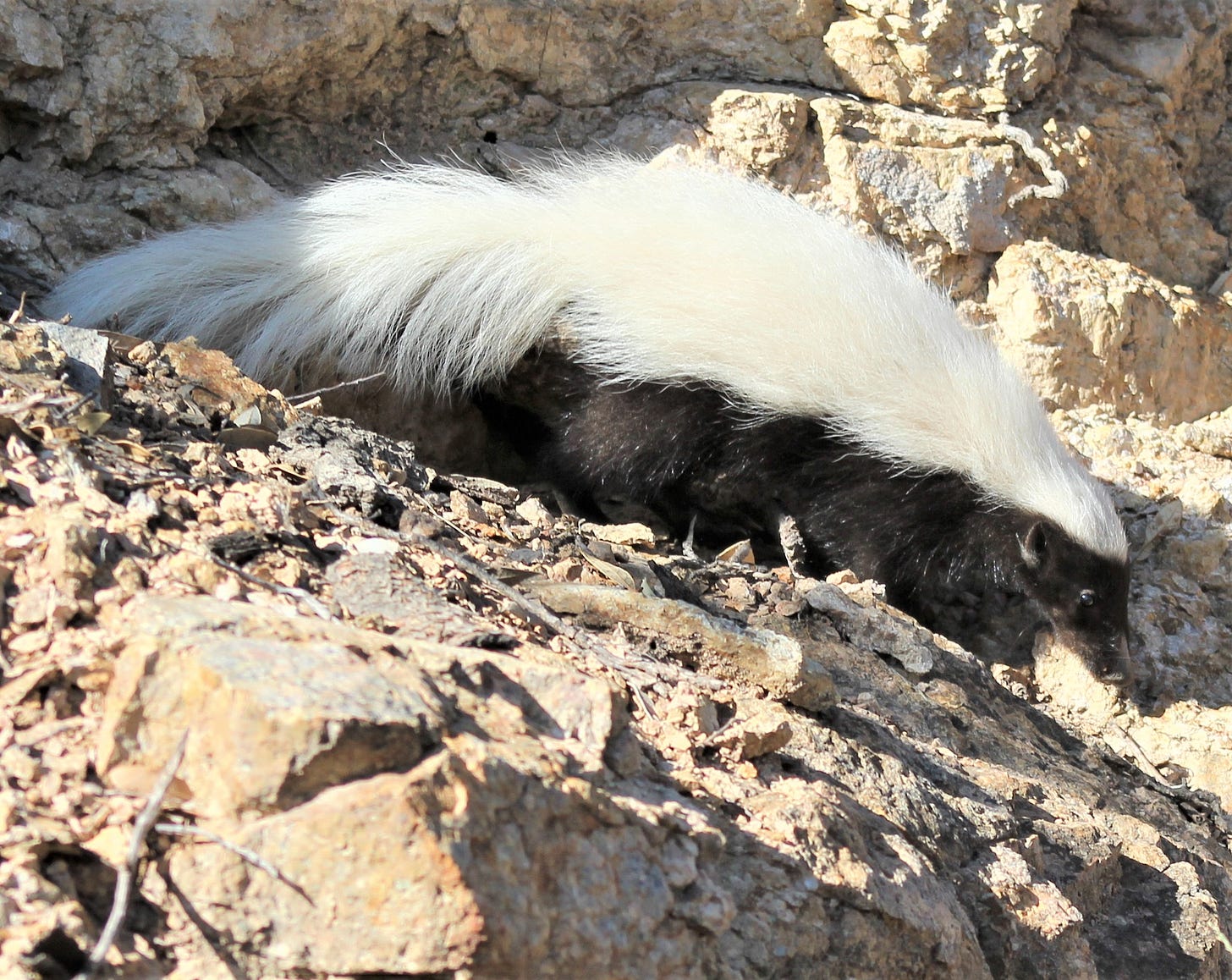
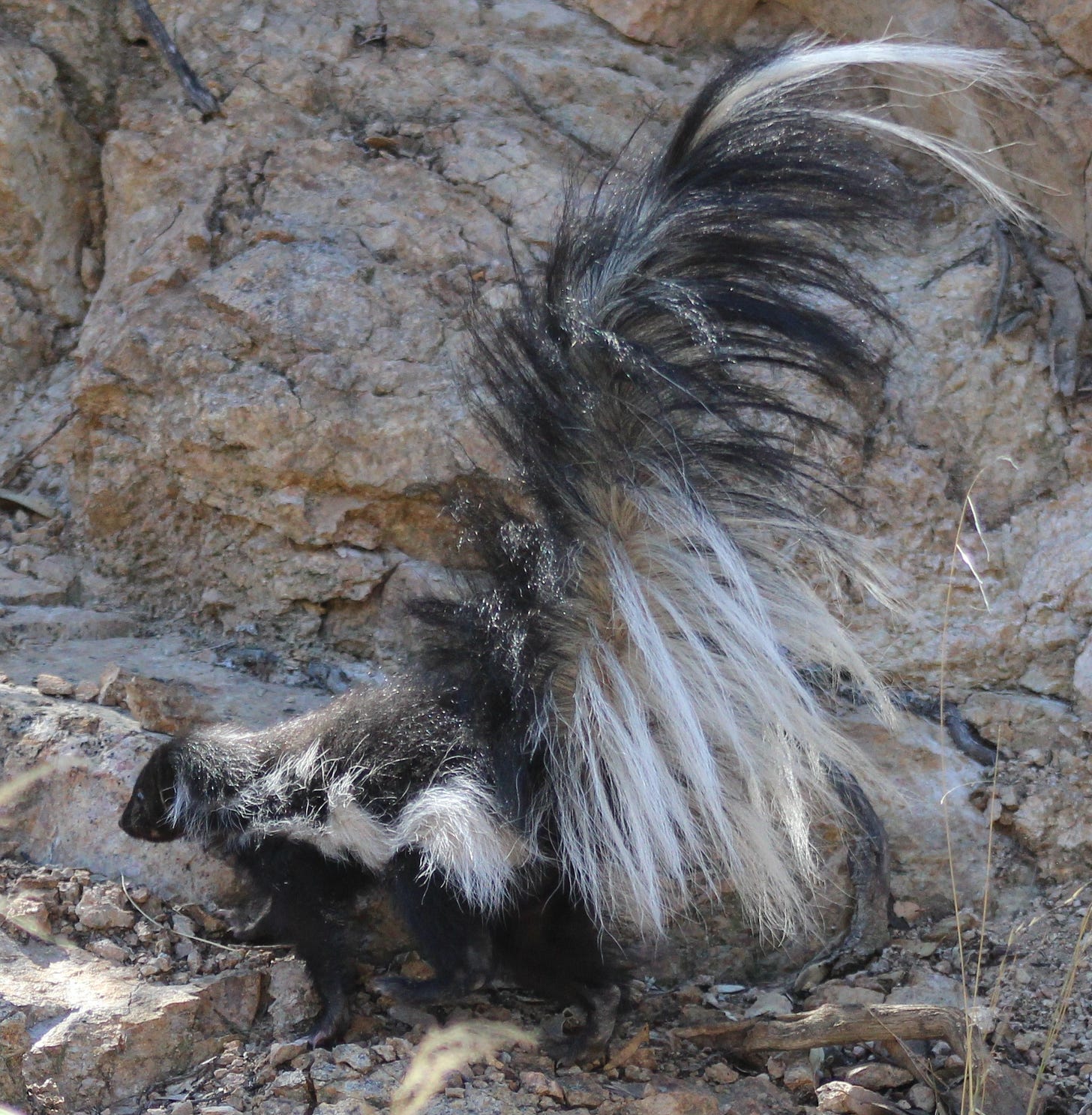
Thanks for subscribing! Please share!



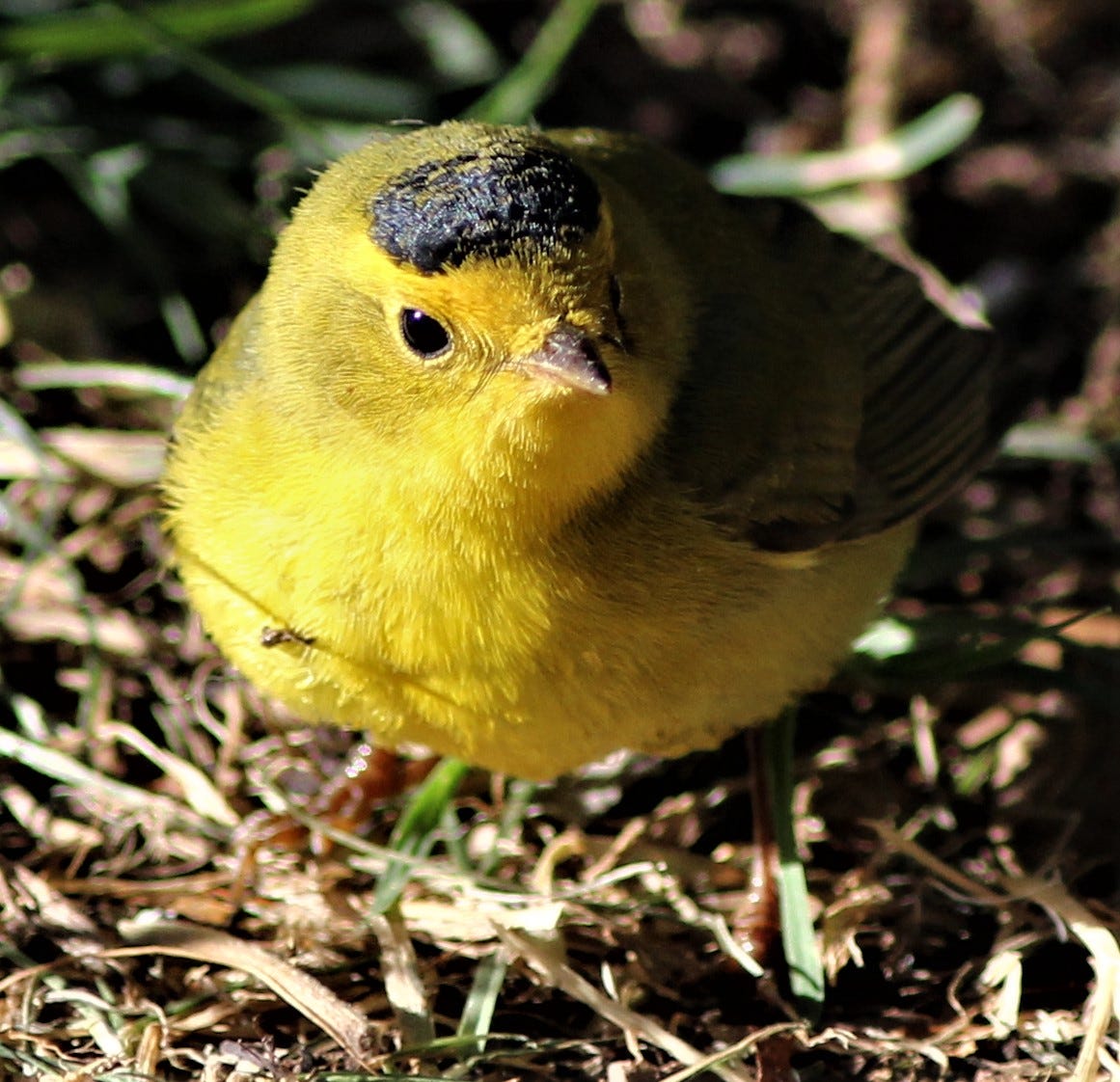
That's funny, (tomato juice doesn't work) Very interesting that there were different species of skunks cohabitating under your house. I would have suspected a family. Great photos.
Never had a Hog-nosed or Spotted here but neighbors have. Hmmmph.